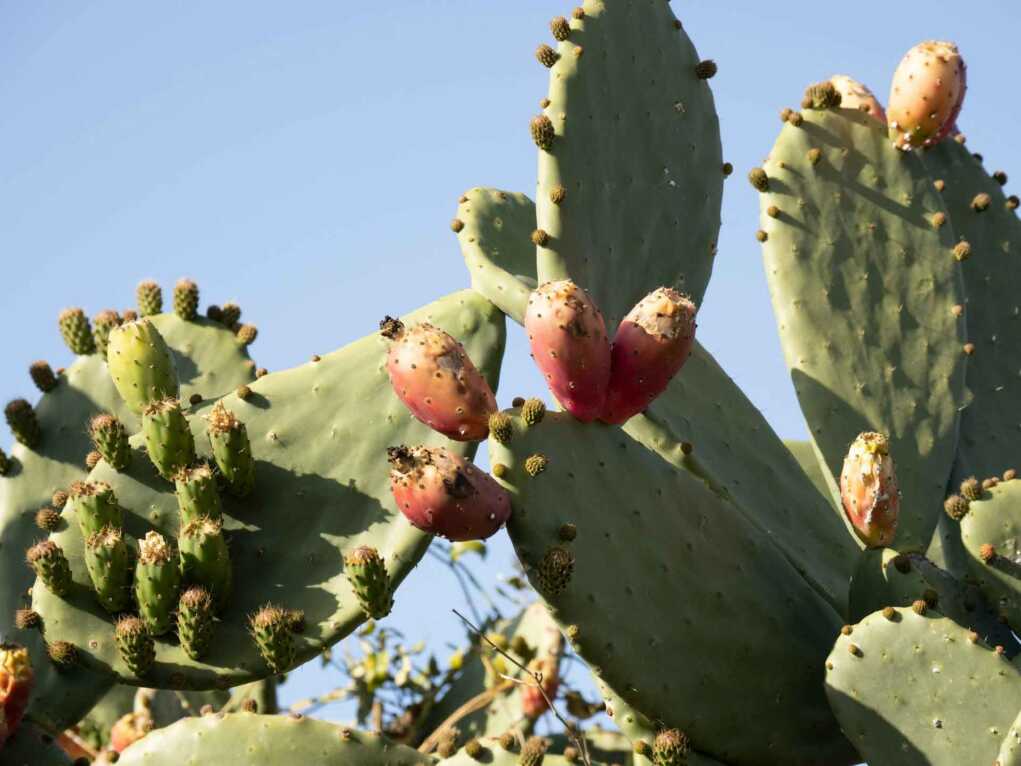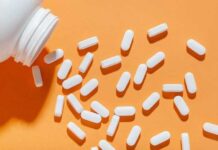
Though spiky and otherwise unappetizing, the prickly pear cactus has much to offer in nutrients, flavor, and medicinal qualities.
Practitioners of traditional medicine among the indigenous peoples of Mexico have long used the prickly pear cactus—or “nopal” as it is called—as an essential plant for treating numerous conditions and disorders. There is growing interest in this prickly plant as many scientific studies indicate its increased potential as a treatment for some of the chronic disorders plaguing us today.
Nopal’s rich composition of phytochemicals, vitamins, minerals, fiber, and amino acids is responsible for its many healthy characteristics, including anti-inflammatory, antioxidant, hypoglycemic, antimicrobial, antiviral, and neuroprotective properties. Therefore, nopal’s therapeutic potential can be considered for the treatment of metabolic disorders, including diabetes and obesity, two of the top chronic conditions contributing to a decline in quality of life and an increase in mortality for thousands of people. All cactus parts are used in the daily Mexican diet, lending its tart flavor and texture to local cuisine.
History
Historians believe the prickly pear was known and used by indigenous peoples of Mexico for more than 9000 years. The Aztecs used the juice to treat burns and wounds. Nopales have 114 species common to Mexico, the world producer of approximately 800,000 tons annually. More than 7 million acres are grown by 10,000 nopal farmers.
Prickly pear cactus grows in the arid and semi-arid climates of Mexico, Latin America, and Mediterranean countries. The flowers, fruits, and pads are still used today by traditional medicine practitioners in remedies for burns, wounds, edema, glaucoma, liver conditions, obesity, whooping cough, and gastritis.
Benefits
Studies show nopal may be effective in treating diabetes, non-alcoholic fatty liver disease, rheumatism, cancers, viruses, and bacterial infections. Extract of nopal may help with alcoholism and alcohol addiction prevention because of its anti-inflammatory effects. Its antiviral activity is being used against herpes simplex virus, respiratory syncytial virus, and HIV.
Nopal Flowers
Nopal flowers are a major source of polyphenols and flavonoids. Their gallic acid content shows high antioxidant activity, which helps reduce cell damage from free radicals, a significant cause of chronic diseases. The normal metabolic processes in the body produce free radicals. Today’s unhealthy increase in these radicals is due to the stress on the body from numerous environmental pollutants and toxins.
Nopal Fruit
The nopal fruit contains vitamins C and E, carotenoids, and fiber. Once peeled, the pulp is refreshing and delicious. Studies show the juice is high in antioxidant properties due to the red-purple pigments betaxanthin and betacyanin.
Nopal Seeds
The fruit seeds are rich in minerals, especially potassium, phosphorus, magnesium, sodium, and calcium. The oil from the seeds contains a high level of omega-6 linolenic acid, higher than in sunflower, grape seed, or sesame oil.
Nopal Pads
The pads have a mucilaginous quality that is used topically in traditional medicine for oozing wounds, abscesses, and skin ailments. The pads have a high level of vitamin C and dietary fiber, which helps improve digestion and elimination, gastric disorders, diarrhea, and water retention. The fiber slows down the movement of food, allowing better digestion of glucose. This quality helps in obesity and diabetic management as well as colon health.
Extracts of the pads, which have bactericidal properties, have been studied for their potential use in the food industry to ameliorate food-borne gastroenteritis, mainly from poultry products.
The prickly pear cactus has shown significant beneficial results for the following three diseases impacting world population.
Diabetes
Type 2 diabetes is a leading cause of death worldwide. According to a 2021 report from the American Diabetes Association, 38 million American adults, or 11.6 percent of the population, have diabetes. A deficiency of dietary fiber may be a cause of diabetes. Consequently, there is ongoing research evaluating nutraceuticals—plant-based drugs—to help manage and reduce this disease.
Extract of the nopal fruit and young pads is under investigation for its positive effects on the metabolism of both lipids and glucose. The above-listed abundant dietary fiber in the pads, eaten raw or cooked, slows bowel movement so glucose is better digested, giving this plant a low glycemic index.
Cancer
The nopal is rich in polyphenols, including gallic and linoleic acids. Linoleic acid is known to help lower cholesterol, which may contribute to inhibitory properties against colon cancer. Gallic acid has a cytotoxic effect against tumor cells from some cancers, including breast, lung, prostate, and leukemia.
Cardiovascular Disease
Science has demonstrated that polyunsaturated fatty acids have health and therapeutic effects on the body. These acids can only be obtained through diet. Nopal’s fatty acids and fiber significantly affect heart health. Research has indicated that increasing dietary alpha-linolenic acid or ALA reduces the risk of fatal coronary heart disease by 20 percent and total cardiovascular disease by 10 percent.
Nopal’s high potassium and low sodium help lower blood pressure.
For a complete analysis of the nutritional value of nopal cactus, see the U.S. Food and Drug Administration’s FoodData Central nutrition table.
Health Cautions
- Because nopal may cause blood pressure to lower it is advised to closely monitor blood sugar levels when taking diabetes medications.
- It is best to eat fresh prickly pear pads and fruit, which are often found year-round in local grocery stores and farmer’s markets. Make sure they have been cleaned of their spines.
- Nopal supplements need more testing.
Important Notice: This article was originally published at www.theepochtimes.com by Sandra Cesca where all credits are due.
Disclaimer
The watching, interacting, and participation of any kind with anything on this page does not constitute or initiate a doctor-patient relationship with Dr. Farrah™. None of the statements here have been evaluated by the Food and Drug Administration (FDA). The products of Dr. Farrah™ are not intended to diagnose, treat, cure, or prevent any disease. The information being provided should only be considered for education and entertainment purposes only. If you feel that anything you see or hear may be of value to you on this page or on any other medium of any kind associated with, showing, or quoting anything relating to Dr. Farrah™ in any way at any time, you are encouraged to and agree to consult with a licensed healthcare professional in your area to discuss it. If you feel that you’re having a healthcare emergency, seek medical attention immediately. The views expressed here are simply either the views and opinions of Dr. Farrah™ or others appearing and are protected under the first amendment.
Dr. Farrah™ is a highly experienced Licensed Medical Doctor certified in evidence-based clinical nutrition, not some enthusiast, formulator, or medium promoting the wild and unrestrained use of nutrition products for health issues without clinical experience and scientific evidence of therapeutic benefit. Dr. Farrah™ has personally and keenly studied everything she recommends, and more importantly, she’s closely observed the reactions and results in a clinical setting countless times over the course of her career involving the treatment of over 150,000 patients.
Dr. Farrah™ promotes evidence-based natural approaches to health, which means integrating her individual scientific and clinical expertise with the best available external clinical evidence from systematic research. By individual clinical expertise, I refer to the proficiency and judgment that individual clinicians acquire through clinical experience and clinical practice.
Dr. Farrah™ does not make any representation or warranties with respect to the accuracy, applicability, fitness, or completeness of any multimedia content provided. Dr. Farrah™ does not warrant the performance, effectiveness, or applicability of any sites listed, linked, or referenced to, in, or by any multimedia content.
To be clear, the multimedia content is not intended to be a substitute for professional medical advice, diagnosis, or treatment. Always seek the advice of your physician or other qualified health providers with any questions you may have regarding a medical condition. Never disregard professional medical advice or delay in seeking it because of something you have read or seen in any website, video, image, or media of any kind. Dr. Farrah™ hereby disclaims any and all liability to any party for any direct, indirect, implied, punitive, special, incidental, or other consequential damages arising directly or indirectly from any use of the content, which is provided as is, and without warranties.








